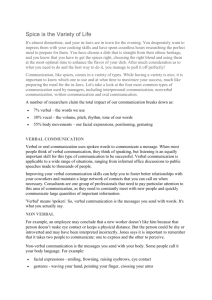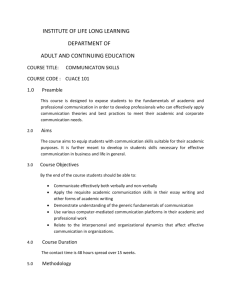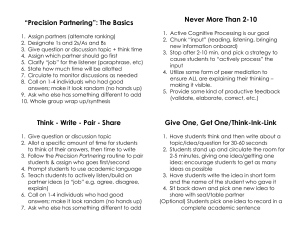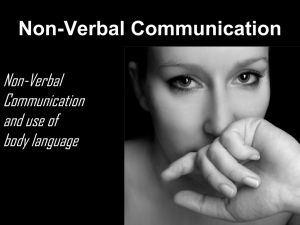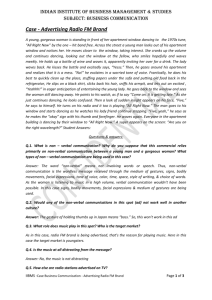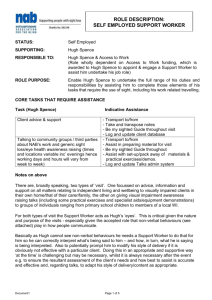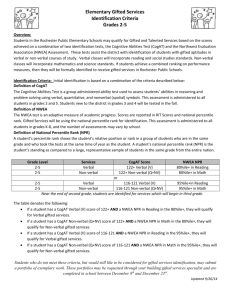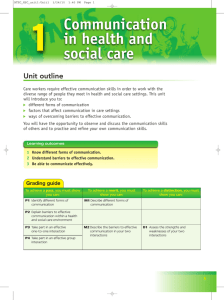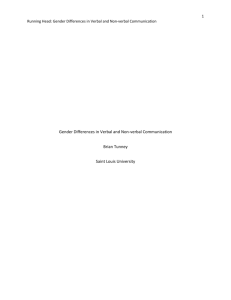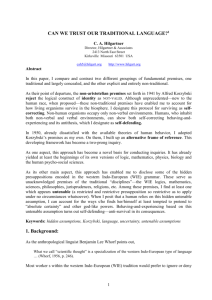Non-Verbal Communication when yes means no
advertisement
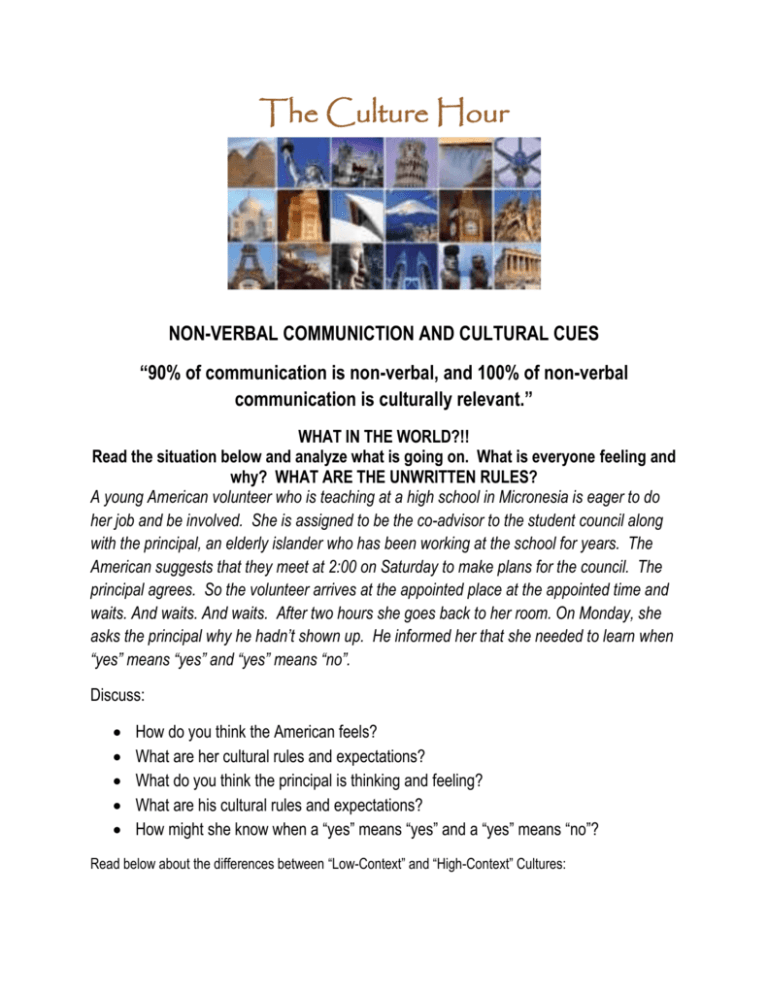
The Culture Hour NON-VERBAL COMMUNICTION AND CULTURAL CUES “90% of communication is non-verbal, and 100% of non-verbal communication is culturally relevant.” WHAT IN THE WORLD?!! Read the situation below and analyze what is going on. What is everyone feeling and why? WHAT ARE THE UNWRITTEN RULES? A young American volunteer who is teaching at a high school in Micronesia is eager to do her job and be involved. She is assigned to be the co-advisor to the student council along with the principal, an elderly islander who has been working at the school for years. The American suggests that they meet at 2:00 on Saturday to make plans for the council. The principal agrees. So the volunteer arrives at the appointed place at the appointed time and waits. And waits. And waits. After two hours she goes back to her room. On Monday, she asks the principal why he hadn’t shown up. He informed her that she needed to learn when “yes” means “yes” and “yes” means “no”. Discuss: How do you think the American feels? What are her cultural rules and expectations? What do you think the principal is thinking and feeling? What are his cultural rules and expectations? How might she know when a “yes” means “yes” and a “yes” means “no”? Read below about the differences between “Low-Context” and “High-Context” Cultures: Low-Context Culture (US) High-Context Culture 1. Overtly displays meanings through direct communication forms. 2. Values individualism. 1. Implicitly embeds meanings at different levels of the sociocultural context. 2. Values group sense. 3. Tends to take time to cultivate and establish a 3. Tends to develop transitory personal relationship. permanent personal relationship. 4. Emphasizes linear logic. 4. Emphasizes spiral logic. 5. Values direct verbal interaction and is less able to read 5. Values indirect verbal interaction and is more nonverbal expressions. able to read nonverbal expressions. 6. Tends to use "logic" to present ideas. 6. Tends to use more "feeling" in expression. 7. Tends to emphasize highly structured messages, give details, and place great stress on words and 7. Tends to give simple, ambiguous, noncontexting technical signs. messages. Is America in general a Low-context or High-context culture? What type of culture do you come from? Can you think of examples where you would be DIRECT in your communication? Can you think of examples/situations where you would be INDIRECT in your communication? Do you like to confront/talk about a problem you are experiencing with a co-worker? Friend? Relative? Why is non-verbal communication important? Basically, it is one of the key aspects of communication (and especially important in a high-context culture). It has multiple functions: o o o o o Used to repeat the verbal message (e.g. point in a direction while stating directions. Often used to accent a verbal message. (e.g. verbal tone indicates the actual meaning of the specific words). Often complement the verbal message but also may contradict. E.g.: a nod reinforces a positive message (among Americans); a “wink” may contradict a stated positive message. Regulate interactions (non-verbal cues covey when the other person should speak or not speak). May substitute for the verbal message (especially if it is blocked by noise, interruption, etc) — i.e. gestures (finger to lips to indicate need for quiet), facial expressions (i.e. a nod instead of a yes). Note the implications of the proverb: “Actions speak louder than words.” In essence, this underscores the importance of non-verbal communication. Non-verbal communication is especially significant in intercultural situations. Probably non-verbal differences account for typical difficulties in communicating.



